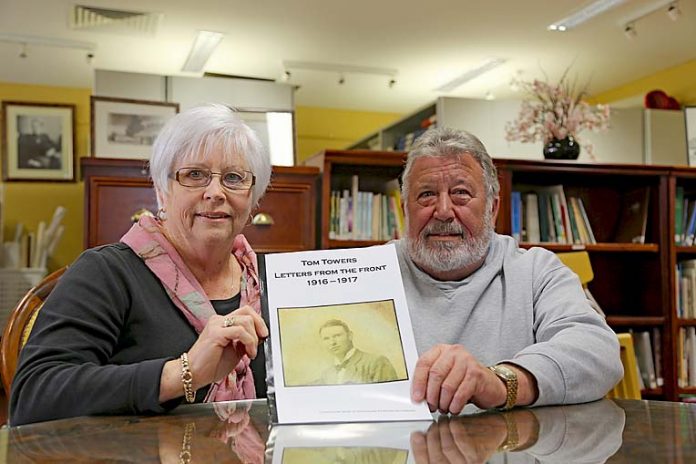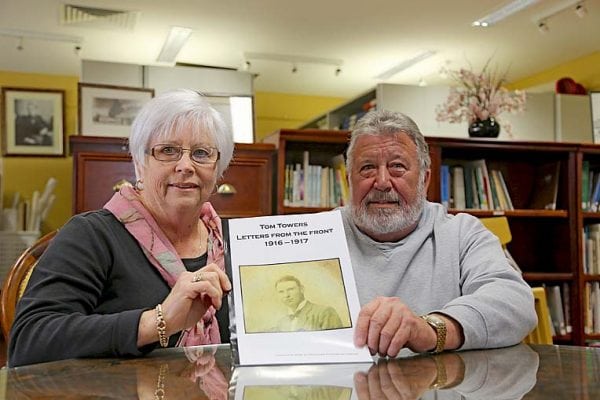

TWO researchers have succeeded on a relentless five-year quest to uncover information about a Millicent resident killed in action in World War I.
Mary Altschwager and Graeme Richardson’s countless hours documenting the tragic history of fallen soldier Tom Towers has culminated in a booklet detailing his life and death.
Titled Tom Towers Letters from the Front 1916 – 1917, the booklet features transcriptions of correspondence sent by the Australian Imperial Force Second Lieutenant during his station in France and Belgium.
The letters, found in a trunk previously owned by late historian Bruce Towers, follow the 35-year-old man’s life across Europe as part of his involvement with the 32nd Australian Infantry Battalion.
“Most of the letters we transcribed were from the frontline,” Ms Altschwager said.
“It was difficult for us to transcribe all of them because of their condition, there were some that were ripped and some that were discoloured.
“Most of them were written to someone called Tuffy and we had no idea who she was.
“In another letter, Tom addressed it to Doris and later on in the letter it said ‘keep on going Tuffy’ and that’s when we realised Tuffy was his niece.
“Transcribing the letters has been a little like a jigsaw puzzle because there are so many pieces you need to put together to get the whole picture.”
The UK-born Tom Towers migrated to Australia with his family as a toddler and after spending most of his life in Millicent, Tom Towers enlisted in the Light Horse regiment in September 1915.
Nine months later, Tom Towers went to Duntroon Military College and studied for commission in the infantry before sailing for England in 1916.
He was admitted to hospital in February 1917 after he was gassed and while on sick leave he obtained his lieutenancy.
In November 1917, he was sent to France and rejoined his unit the next month.
Four days after rejoining his unit Tom Towers penned his final letter to his niece Doris, advising her to “keep the home fires burning”, “vote no to conscription” and “these people are not worth fighting for”.
“The longer he spent over there, the more he seemed to change,” Ms Altschwager said.
“In the earlier letters, he is more upbeat but in the later letters closer to his death, he starts finishing his letters with goodbye.
“In his final letter, you can almost feel his frustration with the situation.
“In that letter he signs off with vote no to conscription which was just heartbreaking.”
A week later, he was killed in action by a German mortar.
His final resting place is at the Messines Ridge British Cemetery near the village of Messines in West Flanders, Belgium.
“I went overseas and visited Tom’s grave,” Mr Richardson said.
“I was so surreal, it was actually a bit frightening really.
“You see all of those graves in France and Belgium but when you’re there, it’s completely different.”
Ms Altschwager said the release of the booklet, which is currently still in draft stage, would provide community members with a unique perspective of life in the trenches.
“He died with no children, but he lives on in our minds,” she said.
“We have read so much about him, his life and his family that he will always live on.”





